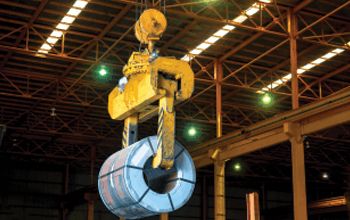
Celle di Carico nell'industria delle gru e degli argani - Garantire efficienza e sicurezza 📰
4 luglio 2024Nel settore edile, manifatturiero e marittimo, le gru e gli argani sono attrezzature indispensabili per sollevare, spostare e posizionare carichi pesanti. La misurazione precisa dei carichi è fondamentale per garantire la sicurezza, ottimizzare l'efficienza e prevenire il sovraccarico delle apparecchiature. Celle di Carico svolge un ruolo fondamentale nelle operazioni di gru e argani, fornendo un monitoraggio e un controllo accurati del peso. Questo articolo esplora l'importanza di Celle di Carico nelle operazioni con gru e argani Applicazioni, evidenziando il loro ruolo nel migliorare la produttività, l'efficienza e la sicurezza in diversi settori industriali.
Monitoraggio del carico e sicurezza:
Celle di Carico sono integrati nei sistemi di gru e argani per monitorare il peso dei carichi sollevati e prevenire il sovraccarico, che può causare guasti alle apparecchiature, incidenti e infortuni. Misurando continuamente la tensione o la forza esercitata su cavi, funi o catene di sollevamento, Celle di Carico fornisce un feedback in tempo reale agli operatori delle gru, consentendo loro di sollevare e posizionare in sicurezza i carichi pesanti entro i limiti di peso specificati. Inoltre, Celle di Carico viene utilizzato negli indicatori di momento di carico (LMI) e nei sistemi di protezione da sovraccarico per avvisare gli operatori di potenziali condizioni di sovraccarico e attivare misure di sicurezza per prevenire incidenti e danni alle apparecchiature.
Controllo della tensione e monitoraggio della linea:
Negli argani Applicazioni Celle di Carico svolgono un ruolo cruciale nel controllo della tensione e nel monitoraggio della tensione della linea durante le operazioni di sollevamento, trazione o abbassamento. Celle di Carico installati nei sistemi di argani misurano la tensione esercitata su funi, cavi o linee, consentendo agli operatori di mantenere livelli di tensione ottimali per una movimentazione del carico sicura ed efficiente. Fornendo un feedback accurato sulla tensione, Celle di Carico consente un controllo preciso delle operazioni di argano, evitando allentamenti o tensioni eccessive che possono compromettere la sicurezza e le prestazioni dell'attrezzatura. Inoltre, Celle di Carico viene utilizzato nei sistemi di monitoraggio della tensione delle linee per rilevare le variazioni dei livelli di tensione e regolare di conseguenza i parametri degli argani, garantendo un movimento regolare e controllato dei carichi.
Gestione ed efficienza del carico utile:
Celle di Carico sono essenziali per la gestione del carico utile e l'ottimizzazione dell'efficienza nelle operazioni con gru e argani, in particolare in settori come l'edilizia, il petrolio e il gas e la navigazione marittima. Misurando con precisione il peso dei carichi sollevati o trasportati, Celle di Carico facilita il posizionamento, la distribuzione e il bilanciamento precisi del carico, riducendo al minimo il rischio di squilibrio o instabilità delle attrezzature. Inoltre, Celle di Carico è integrato nei sistemi di pesatura del carico utile e nei dispositivi di monitoraggio del carico per tenere traccia dei pesi in tempo reale, consentendo agli operatori di ottimizzare la capacità di carico, massimizzare la produttività ed evitare inutili tempi di fermo o ritardi.
Registrazione dei dati e analisi delle prestazioni:
Celle di Carico Celle di Carico installato nei sistemi di gru e argani può registrare i pesi dei carichi, i cicli di sollevamento e le condizioni operative, fornendo preziose informazioni sull'utilizzo delle attrezzature, sull'efficienza e sui requisiti di manutenzione. Analizzando i dati di carico nel tempo, gli operatori e i team di manutenzione possono identificare le tendenze, rilevare le anomalie e implementare strategie di manutenzione proattiva per prolungare la durata delle apparecchiature, ridurre al minimo i tempi di fermo e migliorare l'efficienza operativa complessiva.
Celle di Carico svolgono un ruolo cruciale nelle operazioni di gru e argani, fornendo un accurato monitoraggio del peso, il controllo della tensione e le capacità di gestione del carico. Garantendo la sicurezza, ottimizzando l'efficienza e migliorando la produttività, Celle di Carico contribuisce al funzionamento regolare e affidabile di gru e argani in diversi settori industriali. Con il progredire della tecnologia e l'evoluzione delle esigenze del settore, l'integrazione di soluzioni avanzate Celle di Carico continuerà a promuovere l'innovazione e l'efficienza di gru e argani Applicazioni, migliorando ulteriormente la sicurezza, la produttività e le prestazioni operative.